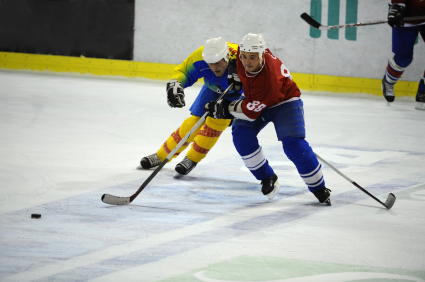 On frozen ponds and indoor rinks across the country, boy and girls are dusting off their skates and sticks and hitting the ice. Hockey has become one of the four top professional sports in North America, and growing numbers of young athletes are getting into the game. The STOP Sports Injuries
On frozen ponds and indoor rinks across the country, boy and girls are dusting off their skates and sticks and hitting the ice. Hockey has become one of the four top professional sports in North America, and growing numbers of young athletes are getting into the game. The STOP Sports Injuries
With a rise in popularity comes an increase in skill level, intensity and competition that can increase the possibility of injury. As a full-contact sport that takes place on the ice with fast-moving players equipped with sticks, pucks and skate blades, hockey's risk for injury is always high.
Hockey players commonly suffer injuries to the head, shoulder, elbow, wrist, back, hip and knee, but concussion is the greatest concern. A player need not be knocked unconscious to have a concussion. Warning signs of concussion include:
- Headache (by far the most common symptom, reported in 93% of high school sports concussions in one recent study)
- Nausea
- Vomiting
- Loss of Coordination
- Vague sense of "not feeling right"
For a complete list of concussion signs and symptoms, click here.
Concussions and many other serious hockey injuries are preventable. "Whenever I talk to young players, I always say the same things," says Dr. Michael J. Stuart, a leading orthopedist and chief medical officer for USA Hockey. "Never use your stick; never use your head as a weapon; never leave your feet to deliver a hit; never do anything at the expense of the health and safety of your opponent or yourself. I try to show them that you don't have to kill the other guy to separate him from the puck."
Smart players take the right precautions on and off the ice. In addition to altering the way they play the game, players can take these prevention
- Have a pre-season medical examination (a/k/a pre-participation physical evaluation or PPE) by a trainer or doctor to make sure they're ready for play.
- Participate in a sports conditioning program to stay in game-shape.
- Use high-quality equipment and replace old worn-out gear.
- Understand the rules of the game and good sportsmanship.
Source: American Orthopaedic Society for Sports Medicine
Posted December 22, 2010,Updated Feb. 2,2015








